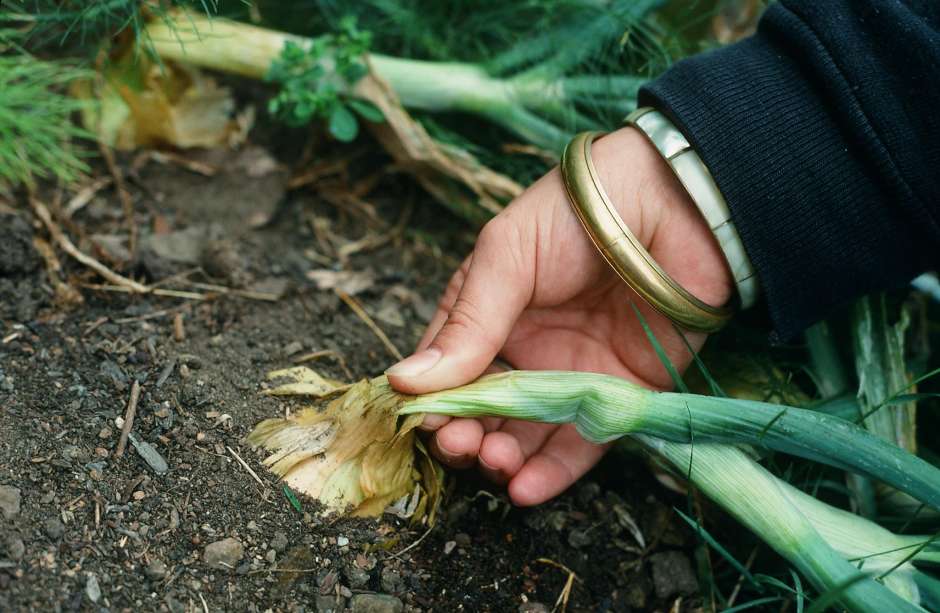
Old farmers would say of a farmer they admired: “He knows his onions.”
Old farmers are few and far between these days, as is any urban gardener who knows his/her/their onions. In addition to the basic knowledge needed, producing globe onions (also called bulb onions) in our gardens is complicated by our many microclimates. But with a little planning, we can harvest the same big, sweet and pungent globe onions that we see in grocery stores.
Before you start, there are two factors to understand: The first is why you shouldn’t plant too early. Onions should be planted in fall or winter. But if by December, the stem of an onion plant is thicker than a pencil, the plant is likely to flower in the spring, and thus form no bulb. (In fact, it won’t form much that is edible, and then will produce seed and die. Not what you had in mind!)
The second factor is that onion plants start to form bulbs in response to the day’s length. At our latitude, even the longest day, June 21, is not long enough to stimulate a long-day variety to form bulbs, so avoid planting them. Short-day varieties start forming bulbs as early as the third week of January. Chances are the plants will be so small when they get the “bulbing signal” that the resulting bulb will be rather small.
READ THE FULL ARTICLE: https://www.sfchronicle.com/food/article/What-you-need-to-know-before-you-plant-onions-14904723.php




















